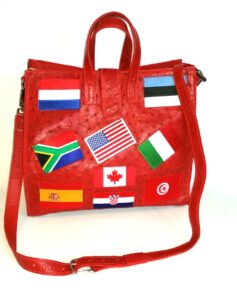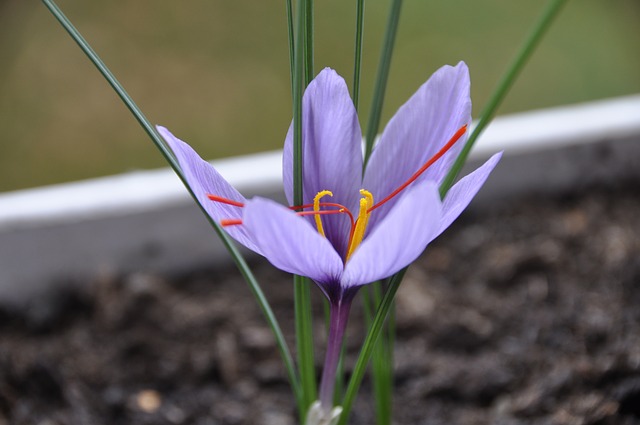Having the time currently to explore cuisines and foods that may have not been a part of your foodie repertoire opens the doors to all sorts of new delicacies and tastes. “Red Gold” or Saffron’s eminence in the cuisine world claims its spice ranking because of its intense flavor and aroma while holding the crown as the world’s most expensive spice.
The crimson threads from the Crocus Sativus flowers are collected and dried for a variety of uses including herbal medicines, seasonings in foods and beverages, perfume fragrances, and its pigmentation provides a golden-yellow hue for dye in dishes and textiles. The flavor is described as a biting, earthy flavor with subtle hints of fruit, honey, or flowers. Saveur.com interestingly describes the spice as having hints of tobacco, hay, and cedar, with nuances of pepper, citrus seed, and menthol.

Saffron’s crocus bulbs are a domesticated autumn-flowering purple perennial plant has its origins (although in some circles disputed) in Iran, yet Greece and Mesopotamia claim birthrights as well. For thousands of years, saffron has been traded as a valuable commodity among tribes and nations. The heavyweight cultivators of this exotic spice are Iran (current world-leading producer), Greece, Morocco, India (Kashmiri saffron reigns as the finest and most expensive), Azerbaijan, Space and Italy. The cultivation of this spice has expanded to both states of Pennsylvania and California who have becoming sizable players in the North American saffron market.
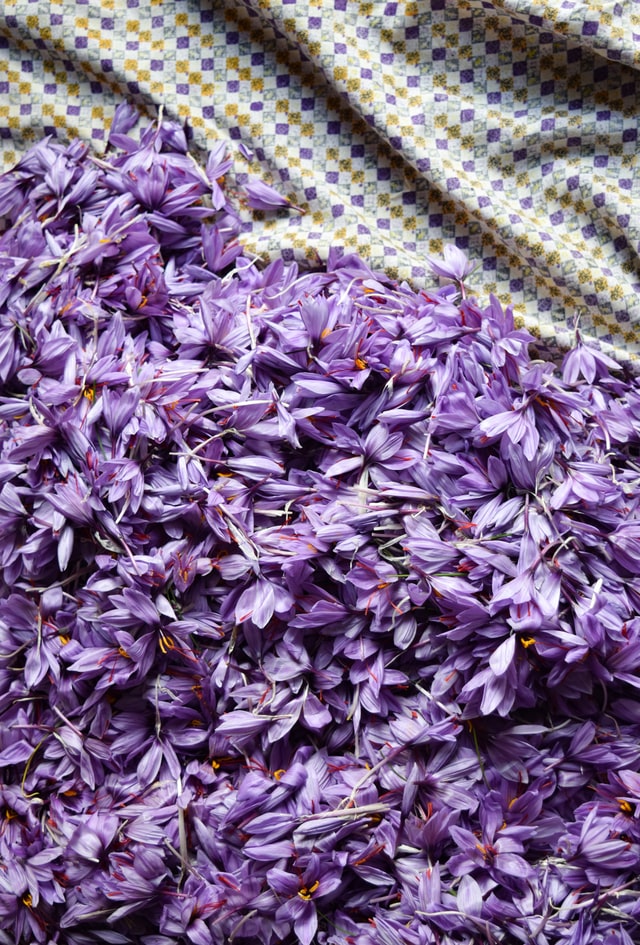
Why is saffron so expensive? Harvesting saffron flowers, generally by hand, is painstakingly laborious. Each flower produces three stigmas. A pound of quality dry saffron can require extracting stigmas from over 75,000 blossoms (which can sell for upwards to $1000 per pound in Western countries). For continuous growth, saffron farmers use a cloning process with the bulbs (saffron corms) as the flower cannot self-reproduce or grow in the wild. During the harvest period, for instance in Kashmir, thousand of growers must work continuously over a span of 1-2 weeks to pick the flowers, extract the stigmas to be dried quickly (before decomposition ruins the batch) over screens of fine mesh, which are baked over hot coals/wood or in an oven heated room.
When shopping for internationally grown saffron, culinary spice experts suggests the following hints:
· Turkish saffron has a strong aroma but is weaker in color
· Iranian saffron has both good aroma and color
· Kashmiri is a bit milder than Iranian but stronger in color
· Spanish saffron has the mildest aroma
Saffron comes in multiple grades from individual loose thread strands (costliest) to ground powder (be aware that some brands will contain imitation saffron and fillers). When cooking with saffron, most recipes require a small amount, so threads will be sold in 3 to 6-ounce packages. Grades can be purchased online and in most grocery stores and specialty markets. To get the superior outcome, stick with threads that will retain its flavor for up to 6 months if stored in a cool dark place, and purchase from a reputable distributor. Quality saffron should be packaged in foil to protect from air and light. A quality thread can cost up to $50 per ¼ ounce.

There are several ways (visual, smell, taste, etc.) to determine real saffron versus fake. For instance, visually, pure saffron will be trumpet-shaped and vivid Crimson Red with a slightly lighter orange-red color on the tips. The aroma will be strong and fresh, not musty, and will have a blended aroma of honey and hay. When placed in a bowl of cold water, eventually the color of the water should be a yellow-golden hue.

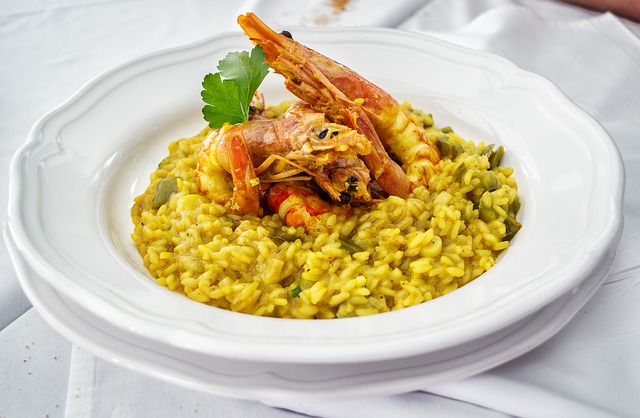
Saffron’s versatility is used in world dishes from locales ranging from Middle Eastern to European cultures. The dried stigmas are used to mainly flavor risottos, pilafs, and paellas. It is a hallmark of Spanish, Middle Eastern and North African cuisines.
· In Sweden, Saffron is the star in the delicate yeast pastry call Lussekatter (Swedish Saffron Buns or St. Lucia Buns). Traditionally celebrated as the beginning of the Christmas season for St. Lucia’s Day (December 13) in such countries as Italy, Scandinavia, Hungary and Croatia. The name Lussekatter translates “Lucia cats” as the buns are rolled into an “S” shape to mimic a cat’s tail, the lightly sweeten rolls are accented by dark raisins or currants representing a cat’s eyes. Crumbled saffron threads are infused in the butter.
· Pennsylvania Dutch use saffron in tradition comfort food dishes like their crust-less chicken pot pie (noodles are used instead), fish, game meats, and beef or pig stuffed organ dishes.
· Saffron threads grounded with a mortar and pestle, shines in dishes that require plenty of liquid for simmering as in bouillabaisses and risottos.
· Saffron’s distinct taste, aroma, and coloring allows it to take center stage in roasted poultry, soups, cheeses, desserts, ice creams and liquors.
· Specific culinary dishes include a Persian rice dish called Tachin, Cardamom Saffron Sponge Cake, an Uzbek dish made best with lamb or a fatty beef cut called Plov (similar to pilaf), Moroccan dishes including pastille (a savory meat or seafood pie), tajines (stew made in a North African tajine pot), Italian deep fried Arancini rice balls, Indian Fried Cauliflower
· Nolet’s Reserve Gin has perfected their sipping gin made with a variety of botanicals, including warm and spicy saffron and verbena, an herb known for its delicate citrus flavor. -AJ
Share your thoughts of favorite saffron cuisine in the comment section below or on Twitter!
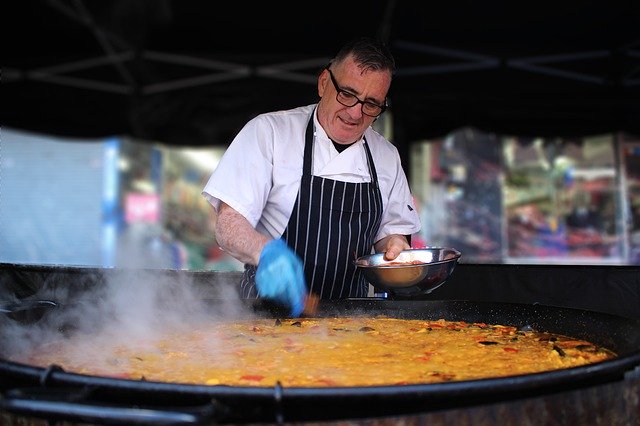
Thank you to the following sites for saffron content and recipes:
Saveur.com – Saffron recipes
The Spruce Eats – St. Lucia Buns
The Spruce Eats – Saffron Facts: Selection and Storage
USA Today – How Pennsylvania Dutch County become Americas Saffron capital
Food and Wine – Saffron Recipes
MasterClass.com – Culinary Uses and Benefits of Saffron
Wikipedia – Trade and Use of Saffron
Hat Tip to the following photographers’ contribution to the visual additions:
Dana Tentis – Risotto with prawns
Mahdi Dastmard – Harvested petals
Christina Zetterberg – Lussekatter or St. Lucia Rolls
Jacqueline Schmid – Saffron Flower
Jamstraigtuk – Paella Chef
Ulrike Leone – Saffron Strands
Hodihu – Saffron Strands
SHARE POST
Customer Favorites
















